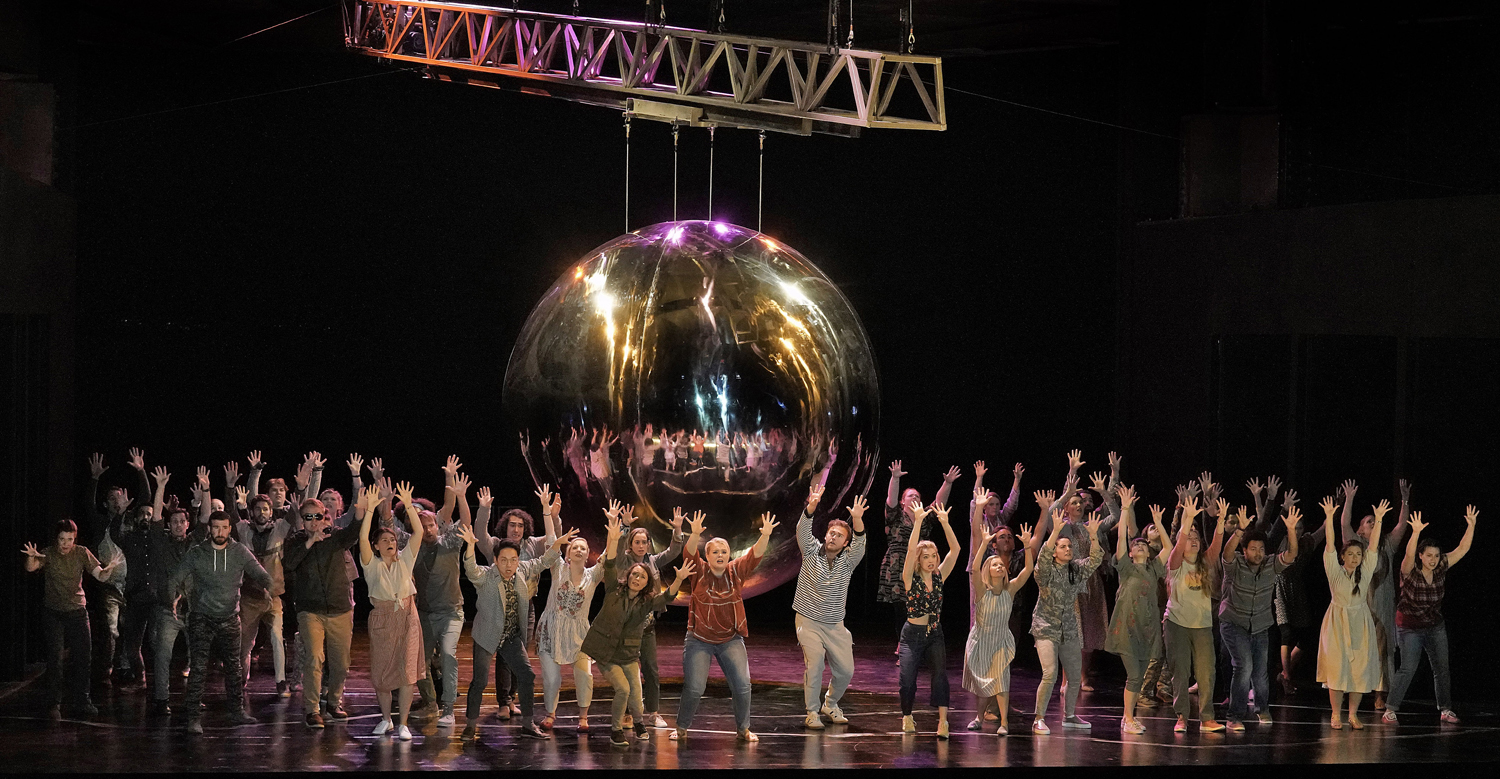“Doctor Atomic,” a theatrical collaboration between composer John Adams and librettist/stage director Peter Sellars, focuses on the events leading up to the first atomic bomb test in the summer of 1945 and is set in Los Alamos, New Mexico, barely 20 miles from the Santa Fe Opera, which is currently presenting the new production.
In advance of production rehearsals, Santa Fe Opera’s audio/visual director Karl G. Kern increased the company’s inventory of Lectrosonics Digital Hybrid Wireless technology to 30 channels, adding 18 SSM super slight micro belt-pack transmitters and three 6-channel Venue2 receivers to its existing stock of SMDa transmitters and Venue receivers.
“The quality of Lectrosonics’ products is by far superior,” says Kern. “They’ve got a very low noise floor and very solid RF, so it helps you to get a very clear audio signal. Having that low noise floor when you’re trying to just ghost in a very low volume is very important.”
All of the Lectrosonics transmitters are paired with DPA Microphones d:screet 4061 omnidirectional lavalier mic elements to reinforce the stage performances through the company’s newly installed Meyer Sound CAL steerable column array loudspeakers for the 2,000-plus-capacity house.
Celebrated composer and sound designer Mark Grey provided the sound design for the production. “The classical performing arts demand only the best in live sound – critical in sonic transparency, reliability, and highly concealable products,” says Grey. “Lectrosonics always delivers and have been my ‘go to’ for decades.”
Grey employed an innovative microphone technique for the chorus, Kern reveals. “Mark has incorporated those eight microphones into the costumes, in the shoulder and epaulette areas. He uses the chorus mics more as area mics, and worked with the director, Peter Sellars, to create the stage images. One chorus member stands slightly in front of three other chorus members and Mark’s technique picks up all those voices through one mic.”
Kern continues, “When Mark described it to me a year ago, I said, I can’t wait to see how this works—and it works really well. You don’t see the microphone at all. The capsule sits out and we put a little wire on it to hold it up a little bit and keep it from rubbing the fabric. It’s a very clever technique.”
“Doctor Atomic’s” eight principals are all double-miked with dual SSM beltpack transmitters, Kern reports. “They’ve got a primary and a back-up on at all times. We’ve got one female principal who is in a wig, so her mics are under the wig cap. We have one female with natural hair, so hers are clipped into her hairline. All the men are wearing the mics over their ears, on their temples.”

Sound reinforcement for opera differs in philosophy from the approach typically employed for contemporary and popular music. “In classical opera it’s about the singer’s voice, and the singer’s voice coming to be in the space,” explains Kern. “The sound is more about what it is 50 feet in front of them, so close-miking is a very challenging thing. You’re just providing a little bit of high-frequency clarity, and the sibilance and transients that otherwise get lost, to provide that extra clarity and intelligibility, rather than pushing a heavy volume.”
In addition to the recent purchase, Kern arranged for the service department at Lectrosonics, which is headquartered just an hour’s drive away in Rio Rancho, NM, to reblock the opera company’s older SMDa transmitters and Venue receivers to operate within the 470 MHz – 608 MHz frequency range. The new range complies with the 600 MHz band regulations set by the Federal Communications Commission during its frequency spectrum auction to the cellular service providers in 2017.
“We put all of the Venue receivers in a rolling rack with a nice custom plate with our logo and the Lectrosonics logo on it,” says Kern. Santa Fe Opera acquired the new equipment from Craig Beyrooti, CEO of Atlantic Professional Audio in Altamonte Springs, FL. “He’s a friend and mentor of mine, so we partnered with him on this as well,” he says.
Santa Fe Opera’s involvement with Lectrosonics extends beyond the equipment. “Lectrosonics has been a great partner,” says Kern. “A big portion of our summer program here is that we offer technical and talent apprenticeships. I have four apprentices here, college students, who are getting paid, as well as college credit and industry knowledge, for the summer. We’ve worked with Karl Winkler, vice president of sales for Lectrosonics, for several years now. We also take the kids down to Rio Rancho and take a tour of their HQ and see where everything is manufactured.”



















